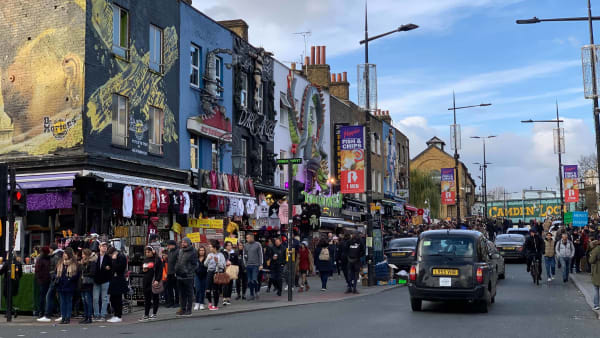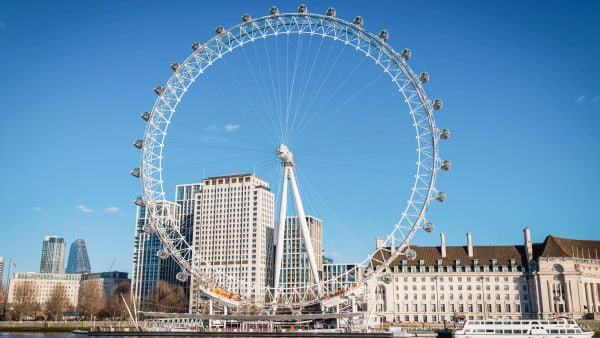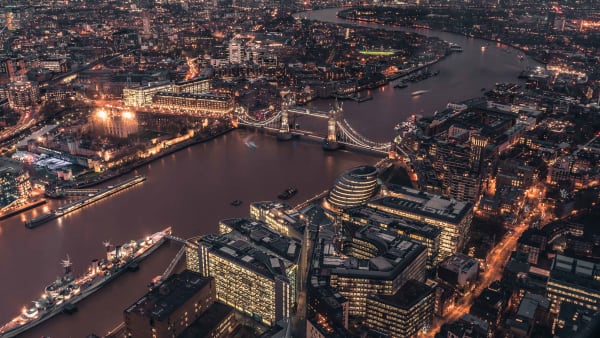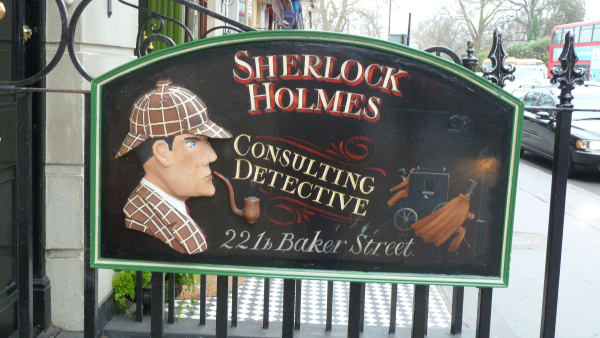Regent's Park
One of the most famous and biggest parks in London, Regent’s Park, is particularly beloved for its sports facilities and open-air theatre.
Regent's Park
One of the most famous and biggest parks in London, Regent’s Park, is particularly beloved for its sports facilities and open-air theatre.
Regent’s Park (whose official name is actually The Regent’s Park) is one of the eight Royal Parks of London. It occupies a vast hilly area in the inner city, and it is known for the wide array of activities offered within its grounds. In Regent’s Park, you’ll find open lawns, the largest outdoor sports facility in London, various curated gardens, a lake, the Open Air Theatre , and the London Zoo .
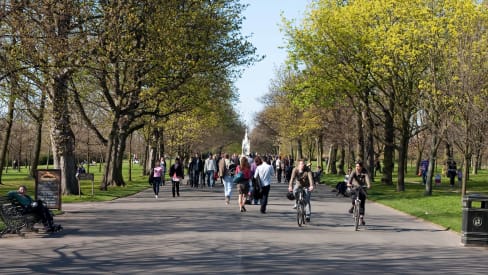
The park’s land was appropriated by King Henry VII in the 1530s and was initially set up as hunting grounds. George IV, also called the Prince Regent, initiated the repurposing of the land as a park in the early decades of the 19th century. The park was finally opened to the public in 1835 and has been ever since.
Like many other London parks, Regent’s Park is a much-loved destination during sunny days and weekends. It is especially appreciated by active and sporty types, thanks to the numerous sports venues . Among them, the biggest one is certainly The Hub , a multi-sports facility in the middle of the park. Other than that, you can also find a boat and pedalo hire in the park’s lake , running tracks, tennis courts, cricket and rugby pitches, as well as football fields.
The Open Air Theatre , located towards the southern section of the park, by Queen Mary’s Rose Garden, is one of the largest theatres in London. With its 1,240 seats, the Open Air Theatre regularly hosts all kinds of plays, both well-known classics and premieres.
Location
The Regent’s Park, North West London.
Regent’s Park is located in the northwestern area of Central London, between the districts Marylebone, Saint Pancras, and Camden Town, just south of Primrose Hill.
The majority of the attractions are located just south of the park, towards the city centre. The closest ones are Madame Tussauds and the Sherlock Holmes Museum, which are both found a few minutes from the southwestern edge of the park.
Entries
Entry to Regent’s Park is always free.
As for the London Zoo, prices vary depending on the season. For example, an adult ticket for the London Zoo can cost £32.27 at peak times (usually during the summer, especially at the weekends), £30.00 for a standard rate (usually during the weekend in the winter and in the weekdays during the summer), or £27.73 for an off-peak rate (in the weekdays during the winter).
You can check which prices apply to your preferred visit dates on the London Zoo’s website . In the table below, you can see all individual ticket rates for the London Zoo.
Keep in mind that the London Zoo is generally included in the London Pass and the 2FOR1 offers. With them, you can get free entries (with the London Pass) and two tickets for the price of one (2FOR1), so we recommend you check them out if you’re interested in visiting the zoo.
| Duration |
|---|
| Peak |
| Off-peak |
| Standard |
| Duration | Adults | Child (3-15) | Visitors 65+, students, adults w/ disabilities | Children (0-2), carers |
|---|---|---|---|---|
| Peak | £32.27 | £21.00 | £29.04 | free |
| Off-peak | £27.73 | £18.04 | £24.95 | free |
| Standard | £30.00 | £19.50 | £27.00 | free |
As for the Open Air Theatre, ticket prices vary depending on the performance and seats chosen. On the Open Air Theatre website, where you can buy your tickets , you will find prices ranging from £10.00 all the way to £65.00. Discounts for young visitors (under 18), senior citizens, and groups are usually available.
Schedule
Regent’s Park is open to the public every day of the week from 5:00 am. Closing times change seasonally, depending on sunset times. This means an early closure in the winter (4:30 pm, 5:00 pm, or 6:00 pm, depending on the month), a 7:00 pm or 8:00 pm closure in the spring and autumn, and late closure (9:00 pm or 9:30 pm) in the summer.
You can see detailed opening and closing times in the following table.
| Month |
|---|
| Jan |
| Feb |
| March, October |
| April, August |
| May, June, July |
| September |
| November, December |
| Month | Opening time | Closing time |
|---|---|---|
| Jan | 5:00 am | 5:00 pm |
| Feb | 5:00 am | 6:00 pm |
| March, October | 5:00 am | 7:00 pm |
| April, August | 5:00 am | 9:00 pm |
| May, June, July | 5:00 am | 9:30 pm |
| September | 5:00 am | 8:00 pm |
| November, December | 5:00 am | 4:30 pm |
Keep in mind that public toilets in Regent’s Park close one hour earlier than the park’s closure time. The London Zoo’s opening times (found at the northeastern corner of Regent’s Park) change similarly with the season. The Zoo always opens at 10:00 am, but in the winter and late autumn the closing time is at 4:00 pm, in the early autumn and spring the closing time is at 5:00 pm, while in the summer it is at 6:00 pm. Visitors are allowed in until one hour before closing.
| Period |
|---|
| 30 Oct - 9 Feb |
| 4 Sept - 29 Oct10 Feb - 28 Mar |
| 26 Mar - 3 Sept |
| Period | Opening time | Last admission | Closing time |
|---|---|---|---|
| 30 Oct - 9 Feb | 10:00 am | 3:00 pm | 4:00 pm |
| 4 Sept - 29 Oct10 Feb - 28 Mar | 10:00 am | 4:00 pm | 5:00 pm |
| 26 Mar - 3 Sept | 10:00 am | 5:00 pm | 6:00 pm |
As for the Open Air Theatre, the venue is open to the public during performances only. You can consult the Open Air Theatre’s programme to see when you can find performances .
Transport
Regent’s Park is one of the largest parks in London. As such, there are several Tube and bus lines that can take you to different parts of it.
Being closer to the city centre, the southern edge of Regent’s Park is reachable by numerous Underground lines. At the southeastern corner you’ll find the stop Regent’s Park, where the Bakerloo line stops, and to the west is Baker Street station, with lines Bakerloo, Circle, Hammerismith & City, Jubilee, and Metropolitan. If you prefer visiting the northern part of the park, closer to Primrose Hill, you’ll find that Camden Town station, along the Northern line, works best.
If you prefer taking the bus, there are several routes you can take. If you want to be dropped off along the southern edge of Regent’s Park, we recommend lines 18, 27, 30, 205, and 453, while line 88 can drop you off at various points along the park’s eastern side. Line 274 has several stops along the northern and western edges, while lines 13 and 113 only stop along the western side.
You can find a summary of the public transport options in the table below.
| Method |
|---|
| Lines |
| Stops |
| Method | Underground | Bus |
|---|---|---|
| Lines | Bakerloo, Circle, Hammerismith & City, Jubilee, Metropolitan, Northern | 13, 18, 27, 30, 88, 113, 205, 274 453 |
| Stops | Baker Street, Regent’s Park, Camden Town | - |
Nearby sights
At the northeastern corner of Regent’s Park itself you can find the London Zoo. Not far from it, separated from the park by Prince Albert Road, is Primrose Hill, a grassy hill that offers lovely views of London. Not far from the park, you can also find the following.
Camden Town - 800 m (0.5 miles) northeast, 10-minute walk from the northeastern edge of the park.
Madame Tussauds - 250 m (0.1 miles) south, 3-minute walk from the southwestern edge of the park.
Sherlock Holmes Museum - 210 m (0.1 miles) southwest, 3-minute walk from the southwestern corner of the park.
British Museum - 1.8 km (1.1 miles) southeast, 23-minute walk from the southeastern corner of the park.










